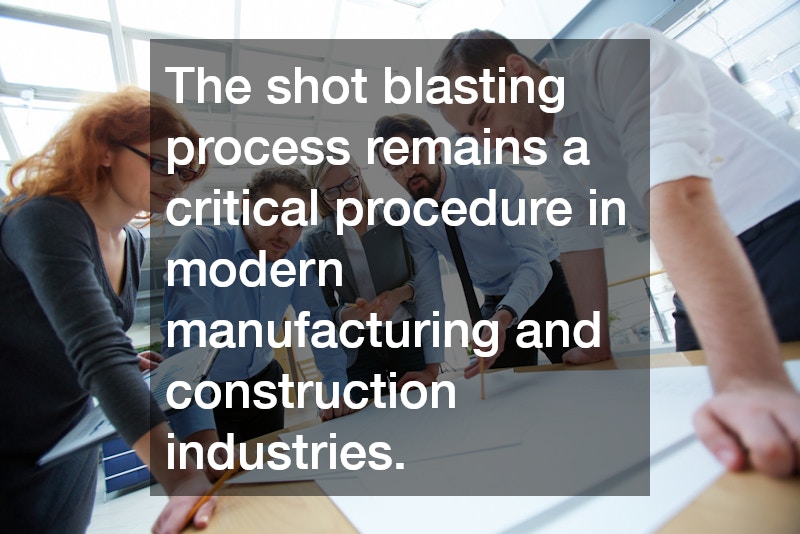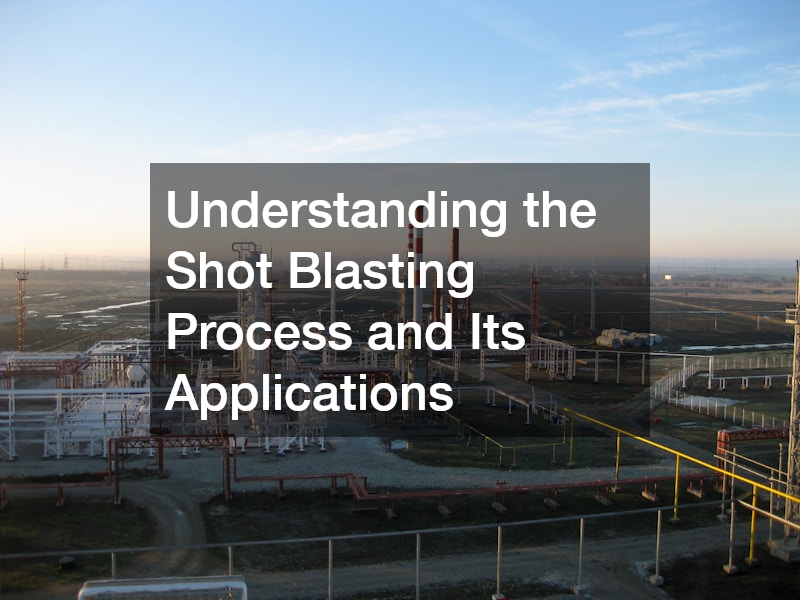The shot blasting process is a cornerstone in surface preparation, highly valued across various industries for its versatility and effectiveness. Renowned for its application in cleaning, strengthening, and polishing metal surfaces, shot blasting remains pivotal in maintaining high standards of production and infrastructure development.
Its importance in manufacturing and construction cannot be overstated, as it prepares surfaces for additional processes such as coating or painting, ensuring adherence and longevity. With applications ranging from automotive to aerospace and beyond, shot blasting contributes significantly to the finished quality of products and structures alike.
The following sections explore the mechanics, significance, and diverse applications of shot blasting, showcasing why this process remains indispensable in today’s industrial landscape.
What is Shot Blasting?
Definition and Mechanism
Shot blasting is a mechanical process used to clean, reinforce, or polish surfaces by propelling abrasive particles using either a wheel or compressed air. By striking a surface with small steel shots or grits, the process removes impurities, rust, and scale, thus preparing the surface for further treatment.
The mechanism involves a controlled and high-speed flow of abrasive material, which ensures deep cleaning and surface strengthening. Its ability to adjust the flow and size of abrasive particles makes shot blasting adaptable to different materials and requirements.
This method not only ensures surface cleanliness but also enhances the material’s mechanical properties through processes like peening, which improve fatigue strength by introducing compressive stresses.
Types of Shot Blasting Methods
There are primarily two types of shot blasting methods: wheel blasting and air blasting. Wheel blasting uses a wheel with blades to thrust abrasive materials at high velocity, making it particularly suitable for larger, more durable surfaces like ship hulls and large steel structures.
Air blasting, on the other hand, employs compressed air to propel the abrasive material, allowing for more controlled and precise applications. This makes air blasting an ideal choice for intricate or delicate surfaces such as small metal parts or decorative items.
Each method has its advantages and specific use cases, ensuring that professionals can choose the most effective approach depending on the material and the desired outcome.
Why is Shot Blasting Important in Surface Preparation?
Role in Material Longevity
Shot blasting plays a vital role in enhancing material longevity by removing contaminants that could lead to corrosion and surface degradation. This fundamental cleaning process prolongs the life of materials and structures, reducing maintenance costs and downtime.
The process introduces uniform texture and compressive stress on the surface, preventing crack propagation and fatigue failures. By eliminating microscopic surface irregularities, shot blasting ensures higher resistance against external mechanical and chemical forces.
The ability to extend material life makes shot blasting an environmentally and economically beneficial process, ensuring sustainable material use and reduced production waste.
Improving Adhesion and Coatings
One of the standout advantages of shot blasting is its ability to improve adhesion properties of surfaces, which is crucial for subsequent coatings or painting applications. By creating a rougher surface profile, shot blasting significantly enhances surface grip, ensuring the coating materials adhere better and longer.
This improvement in adhesion not only ensures aesthetic longevity but also provides better protective barriers against environmental damage, such as UV radiation and moisture ingress. Efficient bonding achieved through shot blasting leads to higher coating performance and reduced risk of delamination, a common problem in poorly prepared surfaces.
Consequently, products and structures subjected to shot blasting exhibit superior quality and durability, fulfilling both aesthetic and functional demands in demanding environments.
What are the Primary Applications of Shot Blasting?
Industrial Manufacturing
Shot blasting is integral within the industrial manufacturing sector, playing a vital role in preparing metal surfaces for further processing and finishing. Manufacturers in the automotive, aerospace, and machinery industries rely heavily on shot blasting to ensure component integrity and superior performance.
By cleaning and hardening surfaces, shot blasting improves the fatigue resistance and stress tolerance of manufactured parts. The process ensures spare and moving parts, such as gears and springs, withstand heavy loads and resist wear and tear over extended usage periods.
This method is also extensively used to maintain high-quality standards and meet stringent industry regulations, ensuring manufacturers deliver reliable and long-lasting products.
Infrastructure and Construction
In the realm of infrastructure and construction, shot blasting is applied to prepare concrete surfaces and steel reinforcements, ensuring they can bond effectively with other materials. Bridges, highways, and buildings often require shot blasting as a pre-treatment step before painting or applying protective coatings.
The technique is particularly effective in removing old paint, rust, and previous coatings from surfaces, preparing them for renovation or preservation works. Its ability to uniformly clean large surface areas while enhancing texture and adhesion properties makes shot blasting an invaluable asset in maintaining infrastructure longevity.
Furthermore, as urban development and restoration continue to grow, shot blasting plays an essential role in ensuring structures meet safety, durability, and aesthetic requirements.
In conclusion, the shot blasting process remains a critical procedure in modern manufacturing and construction industries, offering unparalleled benefits in surface preparation and material enhancement. By improving surface adhesion, enhancing material longevity, and supporting diverse applications, shot blasting ensures high-quality outputs across various sectors.
The process’s versatility and effectiveness enable it to meet the ever-growing demands for durability and performance in today’s industrial operations. As technology advances, future improvements in shot blasting are expected, potentially offering more energy-efficient and environmentally-friendly solutions.




